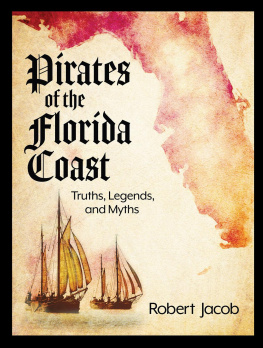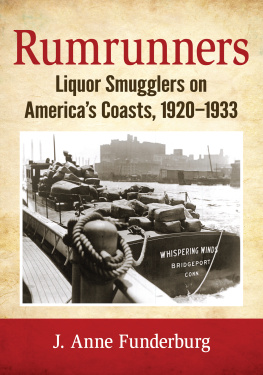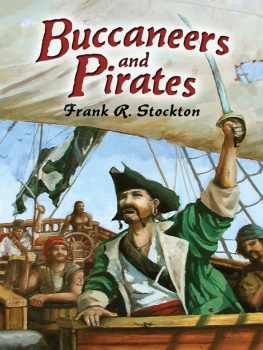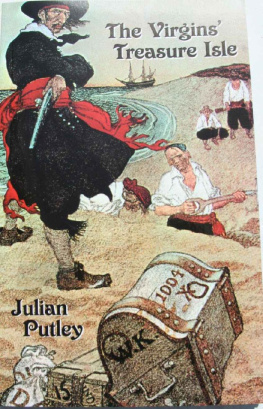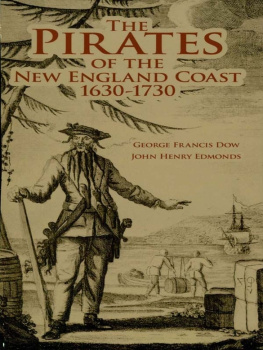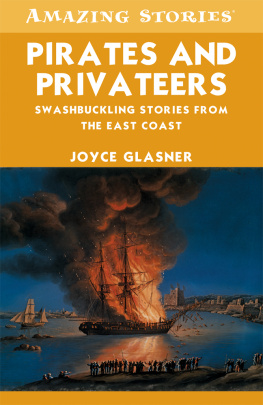Published by The History Press
Charleston, SC
www.historypress.com
Copyright 2019 by Patrick S. Mesmer and Patricia Mesmer
First published 2019
E-Book edition 2019
ISBN 978.1.43966.834.4
Library of Congress Control Number: 2019945078
Print edition ISBN 978.1.46714.179.6
Notice: The information in this book is true and complete to the best of our knowledge. It is offered without guarantee on the part of the authors or The History Press. The authors and The History Press disclaim all liability in connection with the use of this book.
All rights reserved. No part of this book may be reproduced or transmitted in any form whatsoever without prior written permission from the publisher except in the case of brief quotations embodied in critical articles and reviews.
This book is dedicated to the following people:
To our loving parents who brought us into this amazing life, Terry, Hal and Corky.
To the pirates and all other like-minded people who believe in what we do.
And to our fellow residents of the Treasure Coast of Florida who want to keep it a magical place by preserving its history, folklore and natural beauty through conservation and common sense.Gator! Sketch by Don Maitz.
Contents
The coast of Florida was long the favorite resort, and her bays and inlets, but little is known to the rest of the world, long continued to be the safe retreat of the bold, desperate, and reckless race of beings, who, during the seventeenth century, so much infested in the southern seas. It was from this coast that they drew their main supplies; and when driven from the ocean, it was here in these unknown regions that they sought safety. And according to tradition, it was to the Spanish forts and settlements along the coast that they carried much of the blood-stained wealth, which they had gathered by piracy from the four corners of the earth.
Jacob Rhett Motte, Journey into the Wilderness, 1845
Preface
I have always had a passion for the study of history and the charismatic people who created it, especially those who lived their lives on what I consider the edge. People like Bill McCoy, John Ashley, Gertrude Lythgoe and Edward Teach existed among us with a seemingly endless zeal for adventure and danger. Throughout the pages of the past, their stories always seem to shine brighter than all the others. I see each of them as a real person, like you or me, who, at some great crossroads in their lives, was faced with a monumental decision to either choose the common, safe road or take the far riskier path that would propel them into the realm of the immortal. The latter would cause them to burn bright, like a meteor, for a short time, and then burn out quickly, leaving a lasting impression on our psyches that would never die. These men and women refused to be tamed and lived their lives by their own rules until they met their end. Our society chooses to view these qualities as either truly admirable or detestable but always looks on them from afar with objective, child-like fascination. We love to search for greatness in others despite their flaws or methods; it is in our nature.
I have always been fascinated with many controversial historical figures, especially infamous criminals like the gangsters of the 1920s. When I first read the stories about Al Capone, Lucky Luciano, Meyer Lansky and Carlo Gambino, I was immediately intrigued. I learned that often these men were products of extremely tough environments and upbringings. Most were immigrants of Italian or Irish descent who, upon their arrival to their new home in the United States, faced terrible prejudice and persecution due to their cultural diversity and ethnicity. Even though I was shocked at the level of violence and intimidation they were capable of, I also noted the fact that they banded together to form what would become the most powerful and feared crime syndicates of all time. Despite the viciousness and illegal nature of their activities, I admired the bonds of secrecy and loyalty that the early Mafia families had to one another. To me, true power is in commitment, decisive actions rather than words and strength in numbers.
As a young person, I became obsessed with the subject of piracy. When Disneys Pirates of the Caribbean artwork and theme park ride came out, I was hooked. I began to seek out books and short stories relating to the buccaneers of the sixteenth and seventeenth centuries. To my young and impressionable mind, there was something irresistible about the idea of being free and wild on the high seas with no rules. Men like Edward Teach (Blackbeard) ruled not by killing people at every turn but by fear and intimidation. When I think of larger-than-life characters like Blackbeard, I try to separate the myriad of pirate clichs that riddle our culture and imagine what the real man was like. Teach knew that it was better if a potential prize ship gave up in terror before a costly sea battle ever occurred. To me, this is one of the reasons he was so successful. He had to be a true leader of men, a diplomat, a fair disciplinarian and a vicious warrior, as well as an expert sailor and navigator. He also had to consistently lead his men to profitable prizes, or they could possibly turn on him. Edward Teach must have been a truly amazing character.
The place in which we live, Floridas Treasure Coast, has a rich history of smuggling and piracy. In 2016, my wife, Tricia, and I were approached by The History Press to write a book that documents the legends and paranormal activity of many of the regions locations. This publication is called Ghosts of the Treasure Coast, and it has proven to be very popular in this area. We have run a successful business for many years called Port Salerno Ghost Tours. When the publisher offered to work with us on a new project, I suggested this book on the subjects that are very near and dear to me. Tricia and I are very excited to present this work to you and hope that you come visit us and take one of our tours. We sincerely hope that you enjoy Pirates and Smugglers of the Treasure Coast.
Introduction
A Tradition of Piracy and Smuggling
Its around noon on a Saturday afternoon, and Im driving north along the ten-mile stretch of Indian River Drive that runs adjacent to the Intracoastal Waterway. This is the route I always take whenever I go to Fort Pierce, Florida, for business. Its my belief that it is one of the most beautiful roadways in the country. When I pass the Fort Pierce city limit sign, I start looking ahead along the left side of the narrow road. The small sign is there; Old Fort Park, so I slow down to turn in. This is one of the most special spots in all of Florida. The place is a gem, a wonderful little historical site surrounded by great sprawling oaks. I park my truck and get out, pausing for a moment to take in a deep breath of air that is thick with the scent with the sea. There is something soothing about this place; maybe its the sound of the wind rustling through the giant oak trees in the yard or the gentle rhythm of the waves on the beach a short distance away. I walk out onto the grass, past the largest of the oaks, and pause to gaze at the large mound in front of me. I know a little of the history of this place, so I take a moment to run it through my mind like an old, cherished song.






